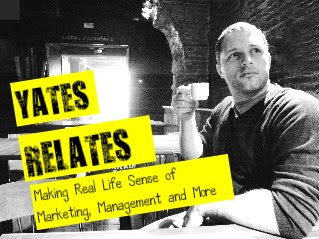Welcome to the world of the Customer Services Trainer, the upbeat, high energy individual who seems to have undying blind passion for the job and has the duty to install ethos and values from day one on the job.
Enter the burly front line service teams, arms crossed, straight faced, the scars from the three line whip fresh on their backs. They have been doing the job for years, they know best, they know how the service is meant to look. If it isn't broke, don't fix it.
Does the pink and fluffy Customer Services Trainer shrink under the pressure of a group of dominant mindsets, or have the ability to challenge them head on and change perceptions?
So how do we take a set of customer service values created as a strategic anchor and translate them into a training room package that will stick in the minds of employees and set the scene for the service moving forward?
The truth of the matter is, every single person in that room is a customer themselves, and they already have the knowledge and ability they need to translate their own expectations and experiences into excellent customer service. What might come in handy is some gentle facilitation.
I've been trialing an approach to customer services training that places front line staff teams firmly in their rightful place, right up at the top of the corporate structure chart, next to customers (with senior management teams and strategic leaders firmly at the bottom).
The premise is that rather than the Customer Services Trainer delivering a syllabus of values or behaviours, they take a less dominant role and allow the delegates to lead the session themselves. It goes a little something like this:-
1. The Culture Change Ice Breaker
An interactive demonstration that blows people's minds. Watch out for my next post "The Power of Positivity" for the finer details.
2. Our Experiences
Ask every single member of the audience to think of two companies. One with which they have had a negative customer experience, and one with which they have had a great customer experience. Then ask them to select one of these companies and say the name aloud, note the number of bad vs good companies mentioned. Spend a good 30 minutes talking in detail about why the individuals have made these selections, get a good understanding about the fundamental issues that created the situation.
This session should be completely unrelated to your business, and will place delegates into the mind set of customers, rather than employees.
3. Our Service
Brainstorm for single word answers to the following 2 questions, and make note of the responses:-
- What do I want people to say about the service I deliver?
- How do I want people to feel about the service I deliver?
Then ask the group to create the service standards for the service. Rather than be told what the standards are, they will decide and define what they should be. Create headings based upon your pre-established customer journey points and create standards for each specific element of the journey. Write as much as you need to.
4. Our Personal Pledges
Produce a pro-forma that gives each delegate the opportunity to give their name, job title and a personal pledge as to how they will personally contribute to delivering great service. Then have them move into a room where a professional photographer is waiting so they can have their photograph taken. Place the framed photographs on the wall in the service environment with each colleague's pledge edited onto the image.
The great thing about this system is that no matter how many sessions you deliver, whether it is one colleague or 50, the value sets and service standards will always align to those of your strategy, because everybody knows what great customer service looks like. At the same time, you have given your teams the opportunity to take ownership of their own service, allowing them to understand that the business does value their input, and is willing to let them take the lead.

No comments:
Post a Comment